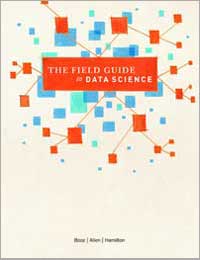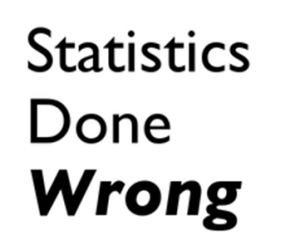Brainstorm
Posted by Armando Brito Mendes | Filed under materiais para profissionais, planeamento
Brainstorm, ou ainda Brainstorming, significa literalmente “tempestade de ideias”. No Brasil, por vezes é jocosamente denominado “toró de parpites”. É uma técnica criativa para obter ideias e soluções. De tão simples que é, muitas vezes é aplicada de forma inadequada, simplesmente como se fosse um bate-papo. Iremos ver aqui no Blogtek algumas técnicas para a busca de soluções de problemas.
Brainstorm – definição e aplicações
Brainstorm – princípios
Brainstorm – regras
Brainstorm – etapas
Tags: captura de conhecimento, decisao em grupo, gestão de projetos
The Field Guide to Data Science
Posted by Armando Brito Mendes | Filed under materiais para profissionais
Data Science is the competitive advantage of the future for organizations interested in turning their data into a product through analytics. Industries from health, to national security, to finance, to energy can be improved by creating better data analytics through Data Science. The winners and the losers in the emerging data economy are going to be determined by their Data Science teams.
Booz Allen Hamilton created The Field Guide to Data Science to help organizations of all types and missions understand how to make use of data as a resource. The text spells out what Data Science is and why it matters to organizations as well as how to create Data Science teams. Along the way, our team of experts provides field-tested approaches, personal tips and tricks, and real-life case studies. Senior leaders will walk away with a deeper understanding of the concepts at the heart of Data Science. Practitioners will add to their toolboxes.
Tags: big data, captura de conhecimento, data mining, DW \ BI
Posted by Armando Brito Mendes | Filed under estatística, materiais para profissionais
Alex Reinhart, a PhD statistics student at Carnegie Mellon University, covers some of the common analysis mistakes in Statistics Done Wrong.
Statistics Done Wrong is a guide to the most popular statistical errors and slip-ups committed by scientists every day, in the lab and in peer-reviewed journals. Many of the errors are prevalent in vast swathes of the published literature, casting doubt on the findings of thousands of papers. Statistics Done Wrong assumes no prior knowledge of statistics, so you can read it before your first statistics course or after thirty years of scientific practice.
The text is available for free online, and there’s a physical book version on the way.
Tags: análise de dados, data mining, decisão médica, inferência
Probability and Monte Carlo methods
Posted by Armando Brito Mendes | Filed under estatística, Habilitações Académicas, matemática, materiais ensino
This is a lecture post for my students in the CUNY MS Data Analytics program. In this series of lectures I discuss mathematical concepts from different perspectives. The goal is to ask questions and challenge standard ways of thinking about what are generally considered basic concepts. I also emphasize using programming to help gain insight into mathematics. Consequently these lectures will not always be as rigorous as they could be.
Tags
monte carlo, numerical integration, probability, simulation
Tags: Estat Descritiva, R-software, software estatístico
noticias, textos e tudo o mais sobre big data
Posted by Armando Brito Mendes | Filed under materiais para profissionais
Tags: big data, data mining, DW \ BI
A Wakanow Guide to Geography
Posted by Armando Brito Mendes | Filed under visualização
The Different Stages of Mapmaking
The Compass as a Mapping Device
Navigating with the Celestial Bodies
Follow these links to learn more about cartography:
- Cartography Concepts: A Student’s Guide to Mapmaking
- PBS: Mapmaking Classroom Resources
- The Mathematics of Cartography: History of Mapmaking
- National Geographic: Mapmaking Guide (6-8) (PDF)
- The University of Texas Libraries: Glossary of Cartographic Terms
- The University of Wisconsin-Madison: The History of Cartography
- Brief History of Maps and Cartography
- Henry-Davis: Cartographic Images
- The Art of Cartography
- The University of Nebraska-Omaha: What is Cartography?
- What is Cartography: Types of Maps
- The World’s Most Useful Online Map Database: Modern Map Collection: Political, Physical, Thematic, Outline
- How Cartographers Use Symbols (PDF)
- Harvard University: Elements of Cartographic Style
- The University of Texas-Arlington: Maps, Atlases, and Cartographic Collections
- HowStuffWorks: How Maps Work
- Cartography and Geographic Information Society
- The International Cartographic Association
- Ball State University: Maps and Cartography (PDF)
- The University of Georgia Libraries: Online Cartographic Resources
Machine Learning
Posted by Armando Brito Mendes | Filed under materiais ensino, videos
About the Course
Course Syllabus
Tags: data mining, DW \ BI
Machine Learning MOOC
Posted by Armando Brito Mendes | Filed under estatística, materiais ensino, videos
About the Course
Machine learning is the science of getting computers to act without being explicitly programmed. In the past decade, machine learning has given us self-driving cars, practical speech recognition, effective web search, and a vastly improved understanding of the human genome. Machine learning is so pervasive today that you probably use it dozens of times a day without knowing it. Many researchers also think it is the best way to make progress towards human-level AI. In this class, you will learn about the most effective machine learning techniques, and gain practice implementing them and getting them to work for yourself. More importantly, you’ll learn about not only the theoretical underpinnings of learning, but also gain the practical know-how needed to quickly and powerfully apply these techniques to new problems. Finally, you’ll learn about some of Silicon Valley’s best practices in innovation as it pertains to machine learning and AI.
This course provides a broad introduction to machine learning, datamining, and statistical pattern recognition. Topics include: (i) Supervised learning (parametric/non-parametric algorithms, support vector machines, kernels, neural networks). (ii) Unsupervised learning (clustering, dimensionality reduction, recommender systems, deep learning). (iii) Best practices in machine learning (bias/variance theory; innovation process in machine learning and AI). The course will also draw from numerous case studies and applications, so that you’ll also learn how to apply learning algorithms to building smart robots (perception, control), text understanding (web search, anti-spam), computer vision, medical informatics, audio, database mining, and other areas.
FAQ
- What is the format of the class?The class will consist of lecture videos, which are broken into small chunks, usually between eight and twelve minutes each. Some of these may contain integrated quiz questions. There will also be standalone quizzes that are not part of video lectures, and programming assignments.
- How much programming background is needed for the course?The course includes programming assignments and some programming background will be helpful.
- Do I need to buy a textbook for the course?No, it is self-contained.
- Will I get a statement of accomplishment after completing this class?Yes. Students who successfully complete the class will receive a statement of accomplishment signed by the instructor.
Tags: big data, bioinformatica, captura de conhecimento, data mining, DW \ BI
Data Mining with Weka MOOC
Posted by Armando Brito Mendes | Filed under Habilitações Académicas, materiais ensino, software, videos
Welcome to the free online course Data Mining with Weka
This 5 week MOOC introduced data mining concepts through practical experience with the free Weka tool.
The course featured:
- video lectures by Professor Ian H. Witten
- the open-source Weka data mining platform
- access to chapters from Data Mining (3rd Edition)
- discounts from Morgan Kaufmann
- online assessment leading to a statement of completion
The course will run again in early March 2014. To get notified about dates (enrolment, commencement), please subscribe to the announcement forum.
You can access the course material (videos, slides, etc) from here.
Tags: data mining, software estatístico, WEKA
Why Predictive Modelers Should be Suspicious of Statistical Tests
Posted by Armando Brito Mendes | Filed under estatística
Well, the danger is really not the statistical test per se, it the interpretation of the statistical test.
Yesterday I tweeted (@deanabb) this fun factoid: “Redskins predict Romney wins POTUS #overfit. if Redskins lose home game before election => challenger wins (17/18) http://www.usatoday.com/story/gameon/2012/11/04/nfl-redskins-rule-romney/1681023/” I frankly had never heard of this “rule” before and found it quite striking. It even has its own Wikipedia page (http://en.wikipedia.org/wiki/Redskins_Rule).
For those of us in the predictive analytics or data mining community, and those of us who use statistical tests to help out interpreting small data, 17/18 we know is a hugely significant finding. This can frequently be good: statistical tests will help us gain intuition about value of relationships in data even when they aren’t obvious.
Tags: data mining, IBM SPSS Statistics, inferência, software estatístico







